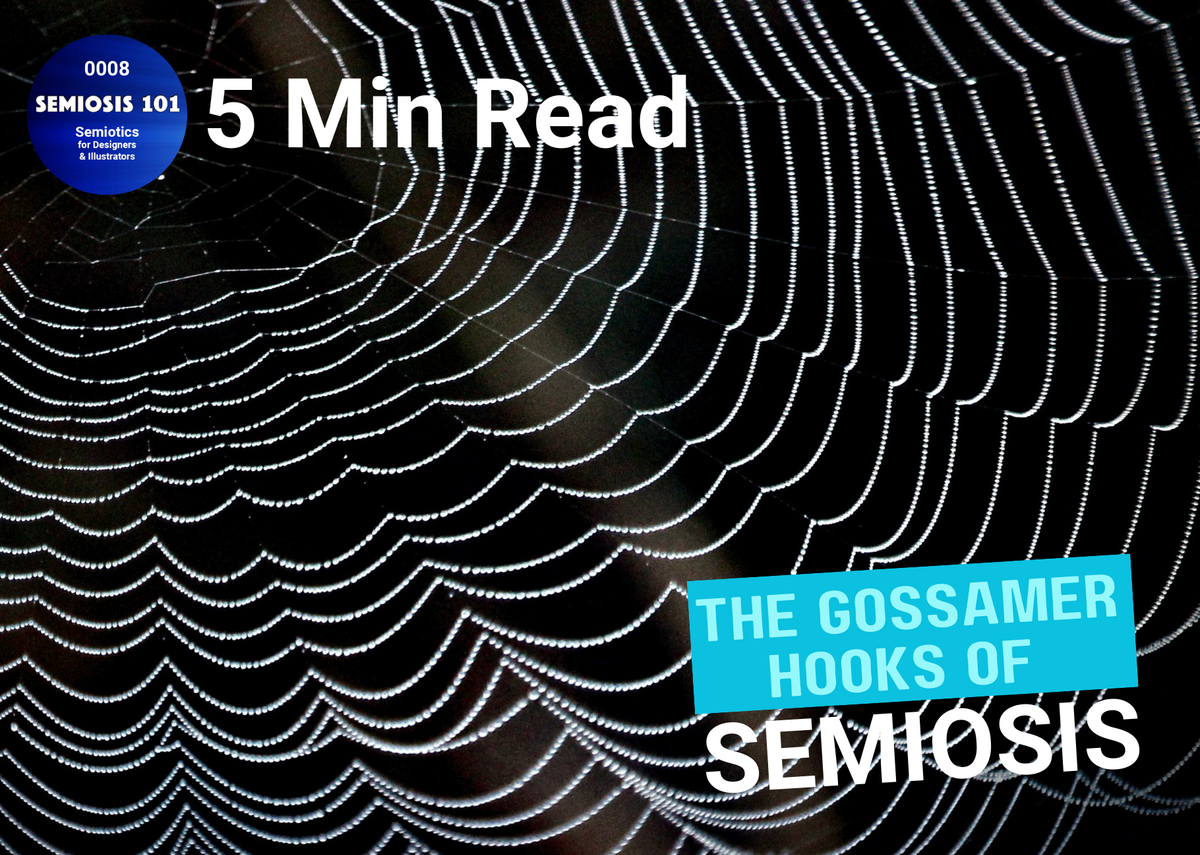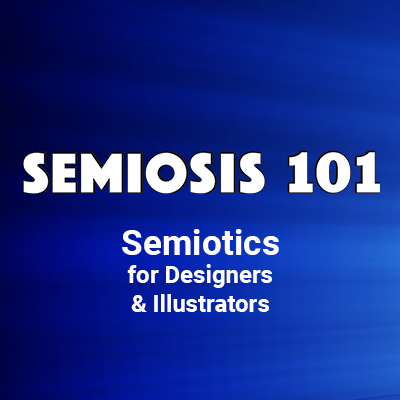BLOG 08: The Gossamer Hooks of Semiosis

Semiosis 101 - 5 minute semiotic read
If we examine Charles Sanders Peirce’s semiotic theory from the perspective of design and illustration, the mediation of meaning is our focus.
In Peirce’s obtuse way, frames semiotic communication as being between three nodes. This brings you creatives into closer alignment with your target audience.
Let me explain this in creative-centric terms.
Peirce’s semiotic sign-action between a concept to be communicated, how that is represented, facilitates an interpretation in the audience. This interpretation, if the representation of the concept is suitably mediated to align with audience lived experiences, will enable them to interpret the concept successfully. This leads to successful visual communication and reduces miscommunication.
Peirce’s Semiosis is a way to structure your visual language, to not just create an aesthetic to hook attention, but to retain audience attention long enough to interpret meaning.
The alignment of your visual language to your target audience’s contextual and cultural experiences is key.
Think about it. Culturally, if your audience has no experience of, say an *apple*, it does not matter how talented you are as an illustrator or designer; it does not matter how amazing your aesthetic ability is to render the best *apple* ever. If your visual communication relies on *apple* to visually communicate what you need to to the audience it would fall flat.
Just think of all the things we visually communicate with an *apple*. Tech companies, a large US city, cider brewers, fairy tale stories would all fall flat, wouldn’t they? Insert anything in place of *apple* and my point stands.
Semiosis offers a logical way to ensure your visual language contextually aligns with your audience.
The meaning-bearing elements in your visual language, which can align to your audience’s contextual references, range from simple to complex.
At a simple level these are mere qualities, which weakly can suggest familiar qualities the audience associates with the desired concept. These weak qualities are initially dormant until perceived as meaning-bearing. Once perceived, the quality is an instant recognition of something in the thoughts of the audience. Peirce calls this instant delivery of possible meaning a Qualisign.
The Qualisign is ephemeral. It is a catalyst for semiotic sign-action to begin, as once perception is engaged, further interpretation can begin. The quality has done its simple job. In combination, the design’s or illustration’s aesthetic has hooked attention; then the Qualisigns (yes, there are multiple) retains attention.
With attention hooked, nested semiotic signs can begin communicating.
Think of Qualisigns as the semiotic gossamer threads of a spider’s web.
At one moment they are invisible until you (as the audience) are snared by one. Then as you become aware of the thread, you attention and perception begins to see the interconnections, until you perceive the web. I will stop this analogy before the spider complicates things (the spider =/= Peirce’s obtuse terminology?).
The analogy to a gossamer web is useful to explaining the encoding of semiotic signs into your work. The gossamer nature of Qualisigns is helpful. Each gossamer thread is interconnected to the next. A single thread (Qualisign) would fail to hook anything, but a wide use of them strengthens how they work together.
In semiotic sign-action, Qualisigns hook attention. Once hooked, the perception moves from the quality to the interconnections.
At this point in discussing Qualisigns, the instant that a visual element is no longer dormant as it is perceived as possibly meaning-bearing, is when Semiosis begins to affect the thoughts of the audience.
Once perception begins to see interconnectedness of visual elements mediating some particular meaning, the semiotic delivery moves to what Peirce calls a Sinsign - a single hit of meaning at a higher level of certainty.
Peirce defines ten classes of semiotic signs, from simple (possible > familiar > instant) to complex. It is only this lowest class of semiotic sign that can ever be a Qualisign. Sign classes 2-4 deliver semiotic meaning as mediated single hits of possible interpreted meaning, leading to suggested interpretations.
Semiosis, when applied to visual communication, can help you designers and illustrators to strengthen how you shape your aesthetic.





